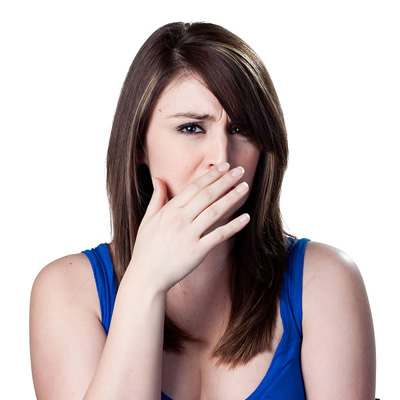UNSAFE DRAFTING
Unsafe Drafting
- Unsafe Improper Drafting
- Cold Air, Smoke or Bad Odor Entering Living Area
-

- A backdraft is when negative air pressure incorrectly draws air back down the chimney into your house. Backdrafting will waft any foul odor coming from your chimney into your living space; some that are particularly strong are creosote, smoke, and animals. Creosote smells like freshly paved asphalt. If there rotting debris or a dead animal in your chimney, it will release a disgusting pungent odor. A bad smell can be the result of buildup within your chimney that definitely needs to be cleaned before using it again. If you have a drafting issue, the odor will be much stronger. In a way, the bad smell is actually a good thing, because it alerts you to bigger issues that could be a fire hazard such as creosote buildup, drafting problems, and a possible blocked chimney.
If you notice that your heating bill is suddenly higher than it usually is most winters, it could be because cold air from outside is entering your house from the chimney. For some, the solution is as simple as closing your damper but for others, the cold air is indicating a bigger drafting issue. If you light a fire and notice that smoke is trickling into your living space and stinking up the room, or you have smoke stains on the top of your fireplace or mantle area, you definitely have a drafting issue. You should put out the fire and have your chimney professionally inspected before lighting another fire. - Carbon Monoxide Emissions in your house
-

- Drafting problems become unsafe when smoke and carbon monoxide enter your living space. Carbon Monoxide emissions are scary because the gas is poisonous and odorless. You have no way of detecting CO unless your carbon monoxide detector alarm goes off. It’s really important to keep your detectors fully operational and check them each year. Also, make sure they are located outside each bedroom.
The
purpose of a chimney is to create a
draft which draws hot air up so that
proper combustion can occur and
smoke and exhaust gases can be
expelled out of your house safely.
Chimneys operate properly because
they are filled with hot air that
rises because it is less dense than
cold air. The rising hot air creates
a pressure difference called draft.
If your
chimney is not drafting properly,
there are several reasons why this
can occur. Tight, poorly
constructed chimneys or chimneys
with improper dimensions for the
fireplace or heating appliance they
are attached to are known to have
drafting issues. The chimney
could also be located with a large
portion of the flue surrounded by
cold air, which reduces drafting.
It is possible that wind is blowing
down the top of the chimney because
a chimney cap is missing. The most
common problem is that the chimney
is too short to create a proper
draft. It is also possible
that the diameter of the chimney is
less than the diameter of the
heating appliance flue outlet.
Another problem, called “The Stack
Effect” sometimes occurs in tall
houses that leak large amounts of
air in the upper stories when heated
air rises. This can result in
negative air pressure below that is
stronger than the chimney updraft.
If opening a door or window near the
fireplace or woodstove eliminates
the draft problem, the best solution
is to provide combustion air
directly into the firebox from
outside. If the design or location
of the stove or fireplace doesn't
allow for this, opening a window
located nearest to the fireplace is
the next best solution.
- Improper Chimney Drafting is an Energy and Money Waster
-

- Of course safety is every sweep’s number one concern but you should also consider energy consumption. Allowing cold air to enter the house through an inefficient chimney is counterproductive to having a fireplace or heating appliance in the first place. The draft actually lowers the temperature of your living area by allowing heat to escape and cold air to enter, which makes you spend more money to heat your home. It is more cost effective in the long run to repair a drafting issue today and save on your electric bill for years to come. Call your chimney sweep to come and assess what professional and permanent solutions can be reached to correct a drafting issue.
- Simple Solutions to fix Drafting (try these first!)
- Here are a couple quick fixes to repairing a drafting issue that do not involve costly construction solutions. Sometimes these simple fixes can fix your issue so you can go back to enjoying your fireplace. If your issue is wind, we recommend replacing your existing (or non-existent) cap with a Vacu-Stack brand cap, which is specifically designed for chimneys that experience highly windy conditions. It will prevent a downdraft by blocking wind that blows directly onto it. It is also important to have an adequate damper opening size (general rule of thumb is 90% of the flue size) to allow smoke to easily pass from the fireplace area into the flue area. If the existing damper doesn’t fully open, or if the design originally was too small, the damper opening must be increased to solve the smoking problem. Another easy, inexpensive technique if smoke is entering your living area is to raise the grate by placing more bricks under it or extending the legs with additional pipe. By decreasing the distance between the burning logs and the damper, the smoke has a shorter distance to travel up and out so it is less likely to wander outside of the fireplace opening. To this effect, you can also make sure the grate and burning logs are as far back in the firebox as possible so the smoke naturally travels out. You could also block off the bottom of the fireplace opening by installing bricks across the opening. Finally, make sure you use dry wood that has had at least a year to fully dry. If the wood has sap or is wet, it will create more smoke that can enter your house.
- More Complex Solutions to Fix Improper Drafting
- If your flue opening is too small, the fireplace opening must be reduced, or the flue size must be increased. The chimney flue should be the same size as the appliance flue collar. If your chimney is too short, it must be extended so that it is past the minimum 15 feet, but also so that the top of it is at least 3 feet above the roofline. Your chimney can also be too long, have cracks in it, or have any number of other issues that require repair work to fix a drafting issue.
Long story short, to cut out a lot of statistics about building codes and measurements, if the chimney needs to be reconstructed, you will need to call a professional chimney sweep to come, do an inspection, and make an assessment of the work that needs to be done to correct the dimensions of your chimney, firebox, or flue.
